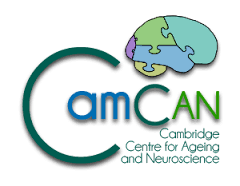CBSU bibliography search
To request a reprint of a CBSU publication, please
click here to send us an email (reprints may not be available for all publications)
Dissociable contributions of the amygdala and orbitofrontal cortex to incentive motivation and decision making
Authors:
Arana, F.S., Parkinson, J.A., Hinton, E., OWEN, A.M., & Roberts, A.C.
Reference:
Journal of Neuroscience, 23(29), 9632-9638
Year of publication:
2003
CBU number:
5838
Abstract:
Theories of incentive motivation attempt to capture the way in which objects and events in the world can acquire high motivational value and drive behaviour, even in the absence of a clear biological need. Additionally, in order for an individual to select the most appropriate goal, the incentive values of competing desirable objects need to defined and compared. The present study examined the neural substrates by which appetitive incentive value influences prospective goal selection, using PET neuroimaging in humans. Subjects were shown a series of restaurant menus that varied in incentive value, specifically tailored for each individual, and on half the trials were asked to make a selection from the menu. The amygdala was activated by high incentive menus regardless of whether a choice was required. Indeed, activity in this region varied as a function of individual subjective-ratings of incentive value. Importantly, distinct regions of orbitofrontal cortex were recruited during incentive judgments and goal selection. Activity in the medial orbital cortex showed a greater response to high incentive menus and also correlated with subjective-ratings of the difficulty of the choice being made, whilst lateral orbitofrontal activity was observed when participants had to suppress responses to alternative desirable items in order to select their most preferred. Together, these data highlight the differential contribution of the amygdala and regions within the orbitofrontal cortex in a neural system underlying the selection of goals based on the prospective incentive value of stimuli, over and above homeostatic influences.

 MRC Cognition and Brain Sciences Unit
MRC Cognition and Brain Sciences Unit

